About 40-80% of people complain of back pain in the lower back, but more than 25% of them see a doctor. In fact, such unpleasant feelings can be caused by both relatively harmless causes and pathological changes in the spine. Therefore, you should not ridicule them.

Causes of back pain
The spine consists of all structural elements: bones, joints, intervertebral discs, ligaments, nerves. Changes in any of them can be accompanied by painful feelings and a different nature. In addition, the spine is surrounded by paravertebral muscles, a pain that patients often confuse with pain in the spine. Thus, the causes of pain can be many. This is due to overwork, natural rebuilding of the body during pregnancy, and so on. can be. However, if the pain occurs regularly, it is worth contacting a vertebrologist or neurologist, because often systemic back pain in the spine indicates the development of certain diseases. .
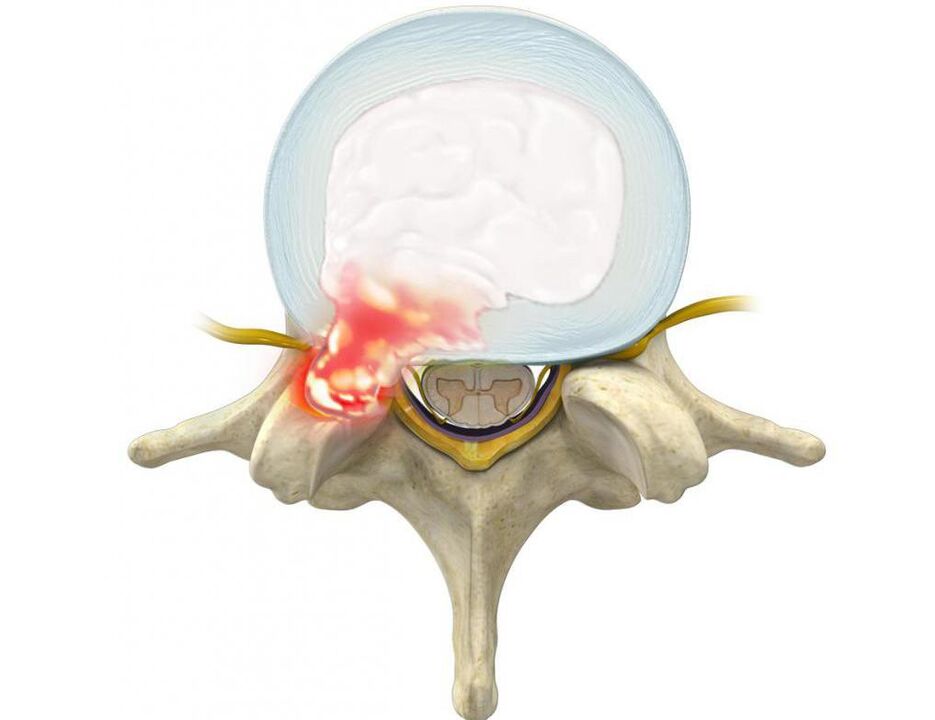
Patients are often diagnosed in such cases:
- pathology of the intervertebral discs (decreased disc height, bulge, intervertebral hernia, disc);
- facet joint pathologies (spondyloarthritis, joint cysts);
- inflammatory diseases (ankylosing spondylitis or ankylosing spondylitis, reactive arthritis, psoriatic arthritis)
- vertebral compression fractures on the background of osteoporosis;
- neoplastic lesions of the spine.
Intervertebral disc pathologies
Degenerative changes in the intervertebral discs or osteochondrosis are very common, especially among young and middle-aged people. This is mainly due to the need to sit for a long time or engage in strenuous physical labor. In old age, the disc dries and the vertebrae grow together.
Pain in the spine can occur in the early stages of the onset of degenerative changes in the intervertebral discs, which are already cartilage of a special configuration that separates the vertebral bodies. This is due to irritation of the pain receptors of the outer layers of the disc, as well as the posterior longitudinal ligament of the spine. Often, osteochondrosis provokes an aseptic inflammatory process, which leads to reflex spasm of segmental muscles. As a result, pain in the spine increases, and there are restrictions on mobility.
Osteochondrosis tends to progress constantly, especially in the absence of appropriate treatment and lifestyle adjustments. This then leads to the development of protrusions, and then intervertebral hernias, which exacerbate existing symptoms and create new ones.
The lumbar region is most affected because it carries the highest loads in daily activities.
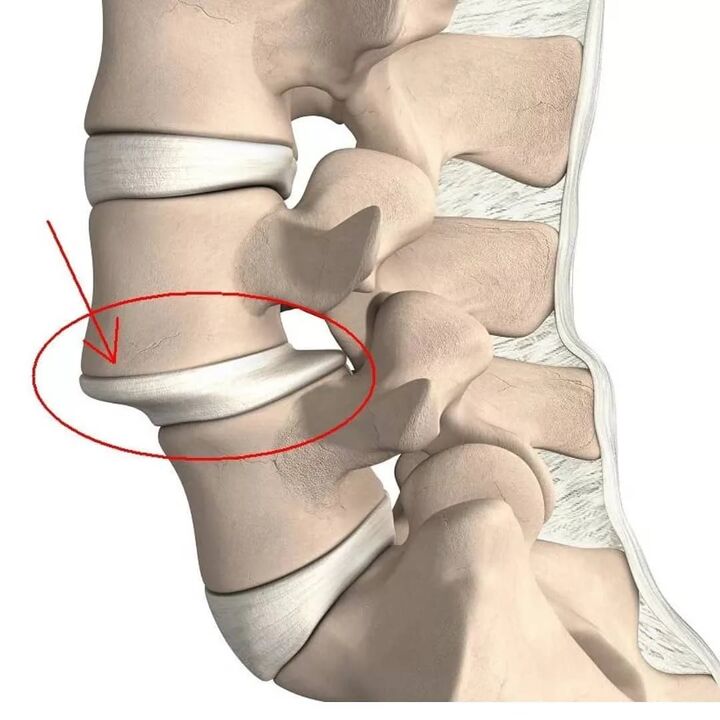
The protrusions are the protrusions that maintain the integrity of the outer shell of the disc, called the annulus fibrosus. While maintaining the effects of stimuli over time, the fibers of the annulus fibrosus do not withstand the load and pressure and tearing of the internal contents of the disc (nuclear pulposus). As a result, the nucleus goes beyond the physiological position of the intervertebral disc. At the same time, the spine always hurts or the pain spreads to the legs, and the discomfort increases with sudden movements, bending, lifting heavy objects, tension, coughing, sneezing, laughing, as well as prolonged sitting. one position, walk, stand.
Often, patients with already formed bulges and hernias unconsciously bend slightly to the healthy side and take a forced position. In this case, the pain in the spine in the lumbar region can reach a high intensity, depriving a person of the ability to work. In such cases, he is forced to adhere to bed rest and squeezes the bent leg and brings it to the stomach to relieve the pain.
Often, protrusions and hernias form in the direction of the spinal canal through which the spinal cord (cauda equina) and the nerve roots branching from it pass. The latter pass through natural openings in the vertebral organs and then branch into the lumbar plexus, which is responsible for the innervation of the lower extremities and various organs (including the genitals).
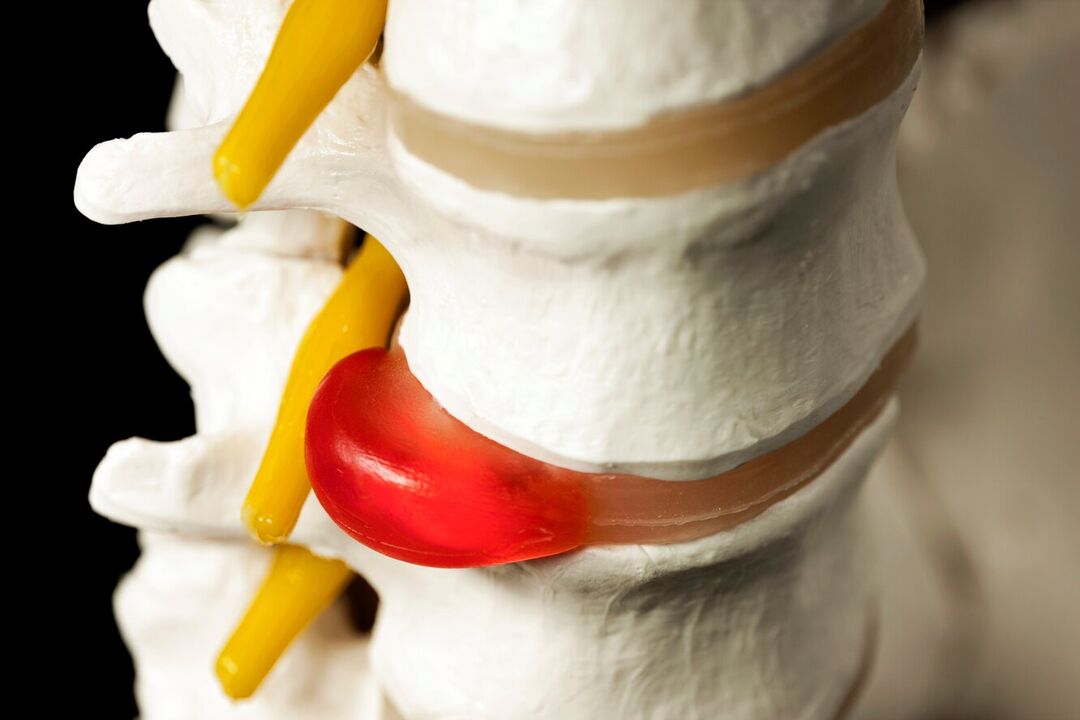
Therefore, often with long-term osteochondrosis, the formation of hernias in the lumbar region, the pain in the spine is gradually not only intensified, but also complemented by other disorders. Neurological disorders occur when swollen soft tissues as a result of a deformed disc or inflammatory process compress the spinal cord passing through them. Therefore, pain in the spine in the lumbar region can be completed by radiation to the hips, groin, front, inner, outer thighs, lower legs and feet. It depends on which nerve root will be damaged, ie at what level of the motor segment of the spine will be observed pathological changes. Sensitivity disorders in the relevant areas of the lower extremities can also be observed in the form of crawling, numbness, temperature changes, pain, tactile stimuli, and limited mobility.
Changes in the height and function of the discs in osteochondrosis and its complications lead to damage to the articular apparatus of the spine, as well as degeneration of the vertebral bodies themselves. The result is the development of spondylosis, ie calcification of the anterior longitudinal ligament and the formation of bone-cartilage growths on the surface of vertebral bodies (osteophytes). Not only can they damage the surrounding tissues and cause severe pain in the spine by squeezing the spinal roots, but they can also grow together. As a result, the adjacent vertebral bodies merge into a single whole, which severely limits mobility in the lower back.
Osteochondrosis may be accompanied by reactive changes in the vertebral bodies, especially reactive aseptic spondylitis, which causes osteosclerosis. This is accompanied by compression of the bone tissue and dramatically increases the likelihood of vertebral fractures.
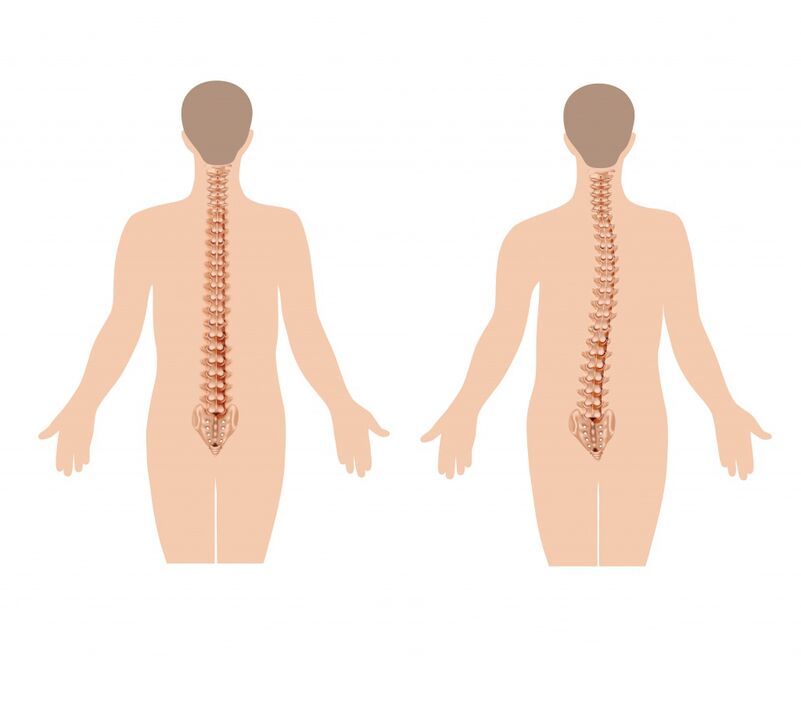
Facet joint diseases
Pathologies of the facet or facet joints of the spine, especially their arthrosis, can also cause pain in the spine in the lumbar region, including severe pain. Although more often the pain is excruciating and localized inside. Their appearance is due to the rich innervation of the synovial capsule. In such situations, the pain is usually concentrated in the directly affected area and tends to increase with bending, stretching, turning the body, standing for a long time. Walking and sitting help reduce their severity. However, in some cases, the pain can be transmitted to the groin, coccyx, as well as the back and outer thighs.
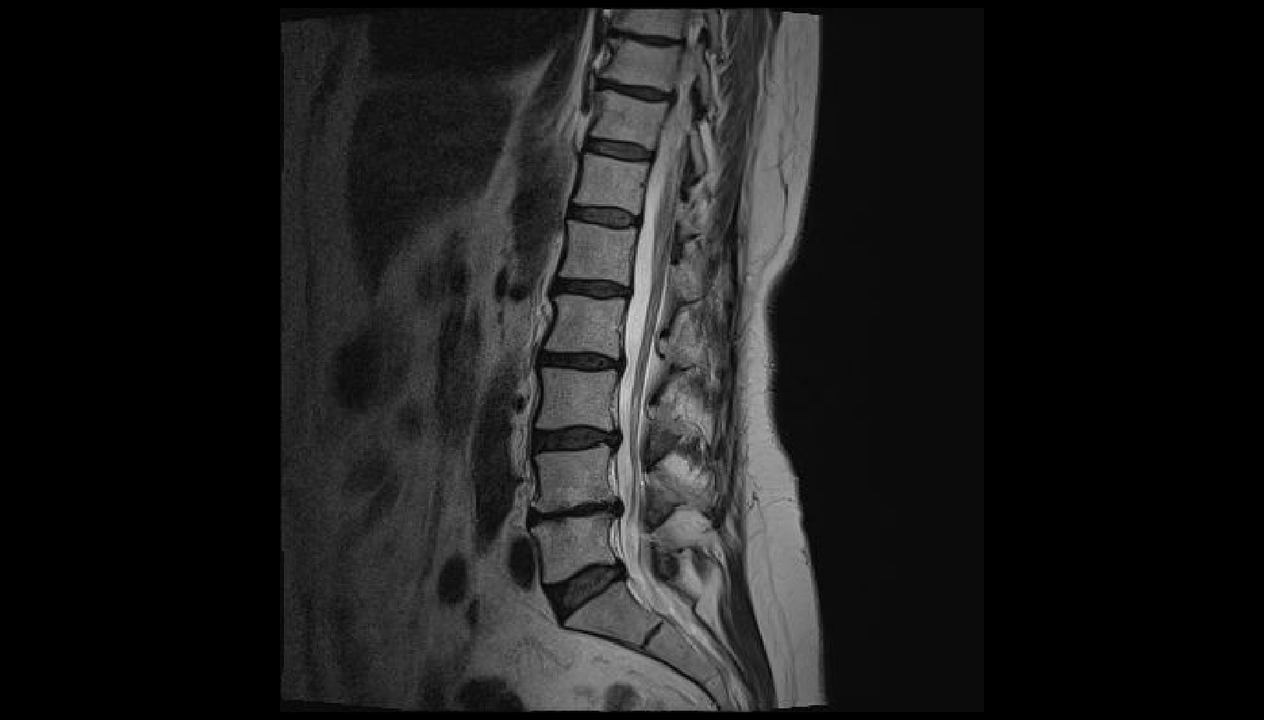
Inflammatory diseases of the spine
Inflammatory diseases of the spine are less common than pathologies of the intervertebral discs and facet joints. However, they also damage the spine. These include:
- ankylosing spondylitis or ankylosing spondylitis;
- reactive arthritis;
- psoriatic arthritis, etc.
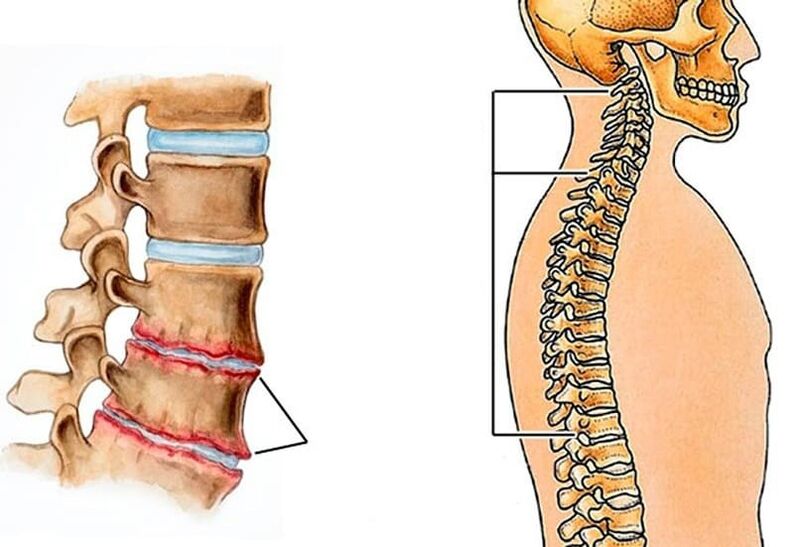
Symptoms of these diseases usually occur before the age of 40, and more often in the 20s. This distinguishes them from degenerative-dystrophic pathologies of the discs and spinal joints, which often develop after 40 years. In this case, the pain is characterized by a gradual increase in intensity. Moreover, after physical exertion, their intensity decreases, but not at rest. Therefore, in inflammatory diseases, the spine in the lumbar region often aches severely at night and especially in the morning immediately after sleep.
The most difficult condition is observed with ankylosing spondylitis, which affects the lumbar region more than other inflammatory diseases. The term refers to inflammation of the intervertebral joints with subsequent immobilization due to the formation of a fibrous connection between dense bone, cartilaginous or articular bone structures.
Initially, they are characterized by mild back pain, but over time they spread more, covering the thoracic and then the cervical spine. This is due to the development of limited mobility of the spine at all levels, because as a result of the changes that occur, the spine appears to be immersed in a certain position. Also observed:
- alignment of the lumbar lordosis (natural curvature of the spine in the lumbar region);
- aggravation of thoracic kyphosis causing bending;
- reflex tension of the back muscles;
- progressive exacerbation of limited mobility due to the involvement of facet joints in the pathological process and ossification of the intervertebral discs;
- morning stiffness of an hour or more.
Inflammation of the cornea (iritis), cornea (keratitis), mucous membrane (conjunctivitis), iris and ciliary body of the eyeball (iridocyclitis) is observed in 10-50% of patients.
The development of ankylosing spondylitis leads to an increase in the number of joints in the pathological process. As a result, patients are forced to take a so-called begging pose. This means open kyphosis of the chest, which affects the depth of breathing, bending of the upper body, bending of the knees with a sharp restriction of range of motion in the chest.
The rate of disease development depends on the adequacy and completeness of treatment.
Compression fracture of the spine
Compression fracture is the flattening of the spine, resulting in a wedge. This leads to disruption of the anatomy of the spine, can lead to trauma to the spinal cord and its roots, as well as become a trigger for the rapid progression of degenerative-dystrophic changes.
The 1st and 2nd lumbar vertebrae are more susceptible to injury because they carry the greatest axial load.
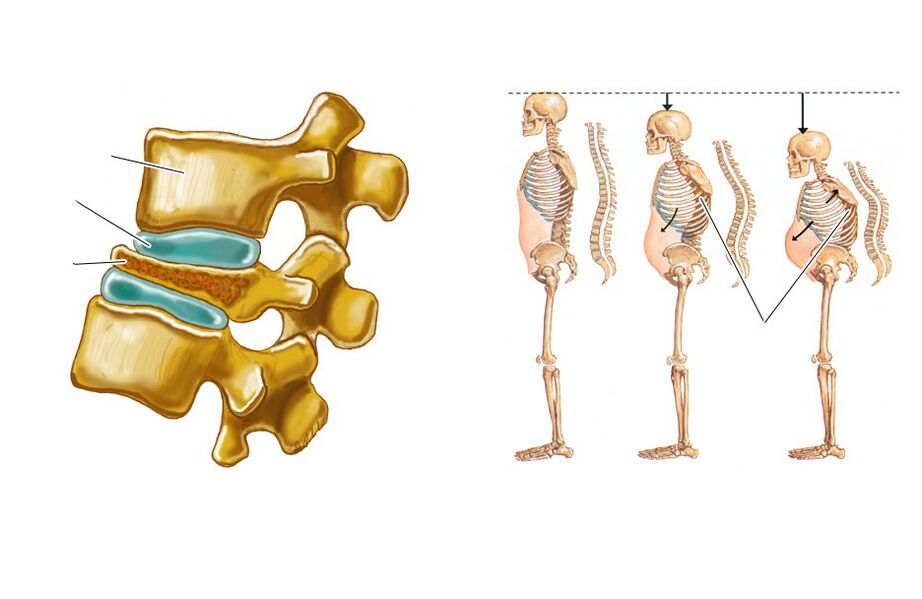
Due to the development of osteoporosis, ie a decrease in bone density, compression fractures of the spine often occur in the elderly. In such cases, not only a slight fall, but also lifting weights, unsuccessful movement may be enough to injure.
The pathology is characterized by the presence of pain in the spine, which restricts movement, increases with sitting, moving and attempts to lift a straight leg up. It usually lasts 1-2 weeks and then gradually decreases over 2-3 months. In some cases, there is irradiation of pain at the tops of the iliac bones and hips. Decreasing the height of a fractured vertebra causes an increase in lumbar lordosis, which contributes to painful sensations.
If a fracture is not diagnosed in time, a decrease in vertebral height can lead to a change in posture and a decrease in growth. This causes reflex tension and shortening of the spinal muscles, which leads to chronic low back pain and requires prolonged rest.
Neoplastic lesions of the spine
Neoplastic lesions of the spine mean the formation of benign and malignant tumors, as well as metastases from neoplasms of other organs. It is less common than pathologies of the intervertebral discs, facet joints, ankylosing spondylitis and even compression fractures, ie in only 1-2% of patients with low back pain. However, such lesions require the earliest possible diagnosis and treatment.
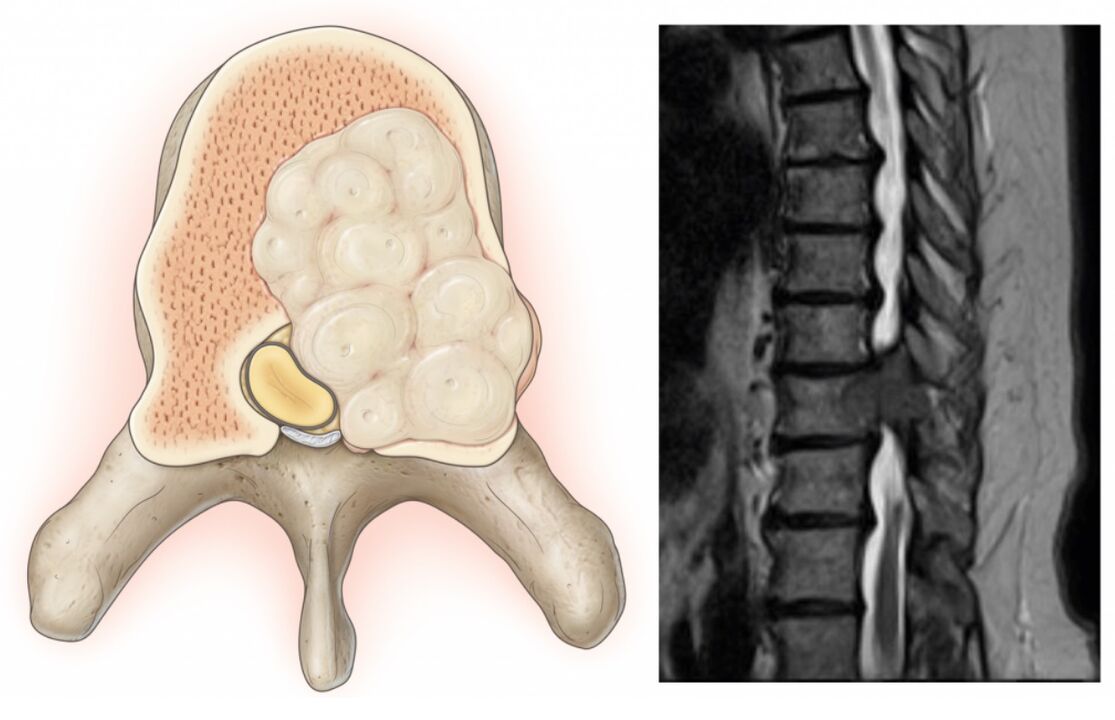
Characteristic features of neoplastic lesions of the spine, in addition to pain, are:
- up to subfebrile values, including an increase in body temperature;
- unreasonable weight loss;
- inability to find a comfortable body position;
- presence of night pains;
- severe pain in the spine;
- inability to relieve pain with conventional analgesics.
Even if you have 1 or 2 of these symptoms, you should make an appointment with your doctor immediately.
In the same way, the following may appear:
- Chondroma is a malignant tumor that is diagnosed in 20% of patients with cancerous lesions of the spine. It often occurs in the sacrum and can occur in people of all ages and genders.
- Young sarcoma - occurs in 8% of patients with neoplastic lesions of the spine. It is more common in young men.
- Chondrosarcoma is a malignant neoplasm that accounts for 7-12% of cases. It is more common in middle-aged men.
- An aneurysmal bone cyst is a benign neoplasm.
- Hemangiomas are tufts of extra blood vessels that commonly occur in 11% of people. It cannot be detected throughout a person's life. However, this increases the risk of spinal fractures.
- Metastases of other tumors are secondary malignancies. More often, breast, prostate, lung and less kidney, thyroid and skin cancers metastasize to the spine.
Diagnostics
If you have back pain in the lumbar region, it is worth making an appointment with a neurologist or vertebrologist. At the time of admission, the doctor first collects a medical history, the nature of the pain, the conditions of its occurrence, the duration of its duration, the presence of other symptoms, lifestyle, etc.
Then a specialist conducts an examination. As part of it, he not only palpates the spine, determines the location of pain, assesses the patient's unconscious gait and posture, but also performs functional tests. With their help, you can detect the symptoms of ankylosing spondylitis, neurological deficits, assess the degree of mobility of the spine and obtain other diagnostic information.
Based on this, the doctor can now accept the possible causes of pain syndrome. Instrumental and sometimes laboratory diagnostic methods are additionally prescribed to clarify them, as well as to accurately determine the degree of damage. They often ask for help:
- radiography in frontal and lateral projection, sometimes with functional radiological tests;
- CT - allows better visualization of bone structures, so spondylosis, fractures, bone tumors, etc. used more often for diagnosis;
- MRI - allows you to assess the condition of cartilage structures and soft tissues as seriously as possible, so often osteochondrosis, protrusions, intervertebral hernias, spinal cord lesions, etc. used to diagnose;
- electromyography - indicated for neurological disorders of unknown origin, as well as to assess the degree of nerve damage;
- radioisotope bone scintigraphy - used to diagnose malignant tumors and metastases;
- X-ray densitometry is the best method for diagnosing osteoporosis;
- myelography - used to detect signs of compression of the spinal cord and cauda equina nerves.
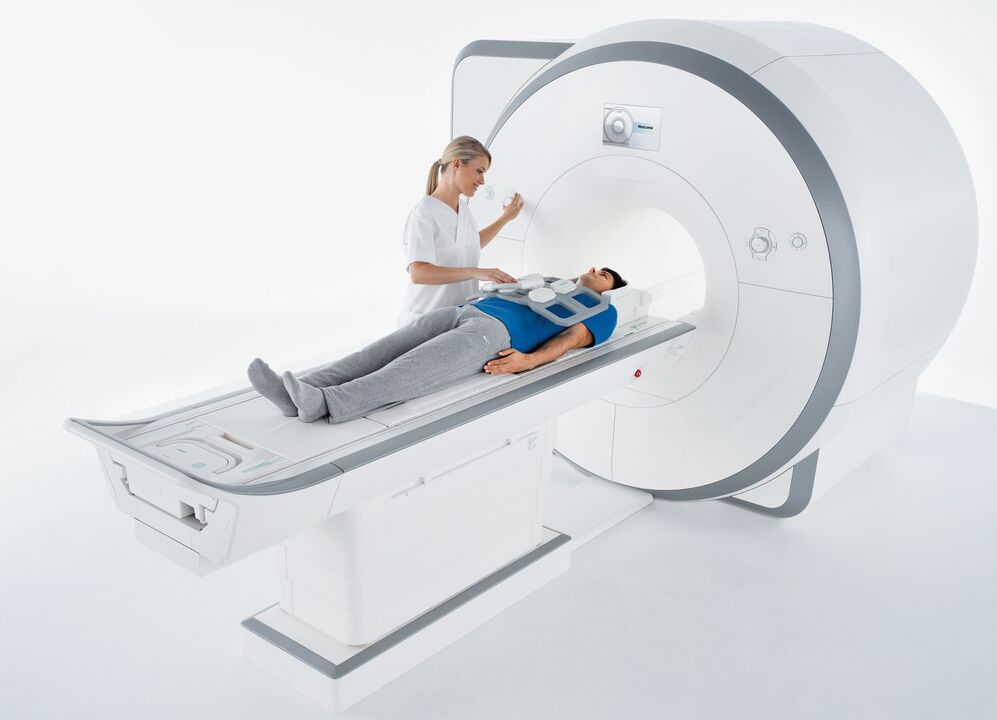
Treatment
Treatment for each patient is strictly selected individually and is based not only on the diagnosis, but also on the nature of the accompanying pathologies. However, it is the cause of back pain that determines the tactics of therapy. This can be conservative or involve surgery.
But the first step is always to focus your efforts on relieving the pain, especially if it is intense. For this, patients are prescribed NSAIDs, antispasmodics, painkillers. And in severe cases, spinal obstruction is performed - injections of anesthetics and corticosteroids at certain points in the spine.
Bed rest is not indicated for all patients. With pathologies of the intervertebral discs, this may be the complete opposite, as a decrease in physical activity contributes to the transformation of acute pain in the spine into a chronic one.
Only conservative or non-surgical treatment is prescribed for:
- osteochondrosis;
- ankylosing spondylitis;
- osteoarthritis of the facet joints;
- light compression fractures.
It is usually complex and consists of:
- Drug treatment that may include NSAIDs, chondroprotectors, muscle relaxants, immunosuppressants, corticosteroids,
- physiotherapy (UHF, magnetotherapy, laser therapy, traction therapy, etc. );
- Exercise therapy;
- hand therapy.

If the cause of back pain is intervertebral hernias, protrusions, spondylosis, severe vertebral fractures, tumors, surgery is often indicated. It is also needed for:
- ineffectiveness of conservative therapy for degenerative-dystrophic changes;
- increase in neurological deficits;
- instability of the spinal segment;
- development of complications, especially stenosis of the spinal canal.
Most modern spinal surgeries are minimally invasive. As a result, intraoperative and postoperative risks are sharply reduced, rehabilitation time is shortened and facilitated, and its effectiveness does not lag behind more traumatic open surgeries. Depending on the disease, it may be recommended:
- Discectomy is an operation mainly for hernias and protrusions, especially those that provoke tail equality syndrome. This can be done with a 3 cm incision (microdiscectomy) using microsurgical instruments and endoscopic equipment given to the spine through puncture punctures (endoscopic discectomy) with a diameter of about 1 cm. When the intervertebral disc is completely removed, it is usually replaced with implants.
- Vertebroplasty and kyphoplasty - indicated for compression fractures of the spine, hemangiomas and some other diseases. The essence of the operation is the injection of rapidly hardening bone cement into the spinal cord through a thin cannula, which strengthens it. It is also possible to restore the normal size of the spine with kyphoplasty, which is important in case of severe loss of height as a result of a fracture.
- Fixation operations are used to stabilize the spine. For this purpose, metal structures of different nature, which remain in the patient's body until the end of his life, are usually used.
Thus, the spine in the lumbar region can be damaged for various reasons. Therefore, it is important to contact a vertebrologist or neurologist if the painful sensations persist for a long time, occur regularly, add to the pain that increases over time, and more other symptoms. Early diagnosis will allow you to detect pathological changes at the stages when it is easiest to cope, and if the disease is not completely cured, at least stop its development and maintain a high standard of living.












































